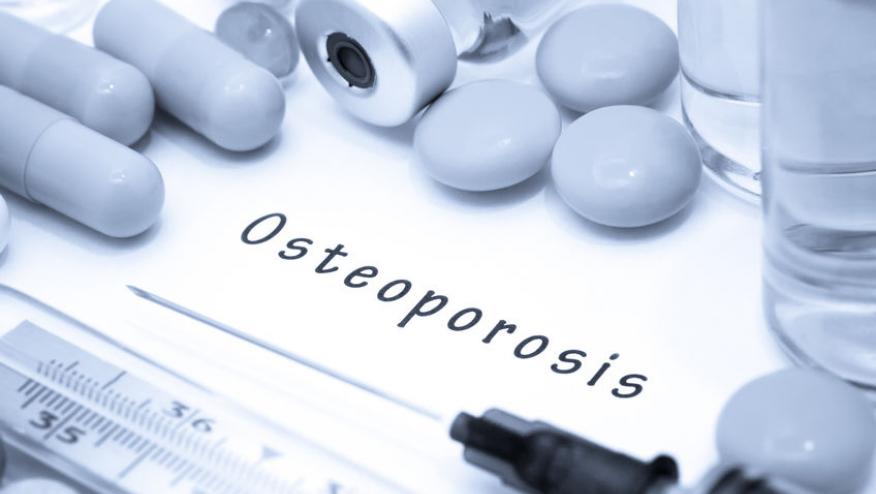Big Advances for Two Osteoporosis Drugs Save

New developments with the FDA and new scientific findings are adding momentum to two drugs experts believe are game-changers in osteoporosis treatment.
In May, the FDA approved denosumab (Prolia) for use in patients who have glucocorticoid-induced osteoporosis and are at high risk of fracture.
A newer drug, romosozumab, could make an even bigger impact. Despite its promise, however, last year the drug failed to receive FDA approval because of safety concerns. In July, Amgen and partner company UCB re-submitted its application.
"It's a bone-building agent greater than we've ever had," said Robert Recker, MD, director of the Osteoporosis Research Center at Creighton University School of Medicine, of romosozumab. "Most of us believe the benefits outweigh the drawbacks. They just have to convince the FDA."
Both drugs are particularly welcome given that osteoporosis remains a chronically undertreated condition, in part because of public fears over dramatic, but rare side effects in older drugs. According to one estimate, only 26% of patients who sustain their first osteoporotic fracture are evaluated and treated.
Denosumab's benefits are well-understood, including bigger increases in bone mineral density compared with other options. The drug has been used for nearly a decade to prevent fractures in people with metastasized bone tumors and to prevent osteoporosis in postmenopausal women. The recent approval specifically covers the drug's use in both men and women with a history of osteoporotic fracture, multiple risk factors for fracture, or who have failed or are intolerant of other osteoporosis therapies.
Romosozumab has received rave reviews for an even greater ability to address osteoporosis, but the FDA raised concerns over data that linked the drug to an increased risk of adverse cardiovascular events. One phase III study of 245 men with osteoporosis found that 4.9% of participants taking romosozumab reported a serious cardiovascular event compared with 2.5% of participants in the control group.
When it recently resubmitted its application, Amgen officials claimed to possess new data they believed would help alleviate FDA objections.
The enthusiasm for romosozumab comes from studies that show an ability to strengthen bone mineral density that outstrips that of other drugs. One of the most influential romosozumab reports appeared in 2016 in The New England Journal of Medicine (http://bit.ly/2LXDIzN)
The study centered on 7,180 postmenopausal women with T scores of -2.5 to -3.5 at the hip or femoral neck. Patients received either romosozumab injections or placebo each month for 12 months, then denosumab for 12 months.
At 12 months, vertebral fractures occurred in 16 of 3,321 romosozumab patients (0.5%) and 59 of 3,322 (1.8%) placebo patients, representing a 73% lower risk with romosozumab (P0.001). Clinical fractures occurred in 58 of 3,589 romosozumab patients (1.6%) compared with 90 of 3,591 (2.5%) of placebo patients, for a 36% lower risk with romosozumab (P=0.008). At 24 months, vertebral fractures were lower in the romosozumab group (0.6% [21 of 3,325 patients] versus 2.5% [84 of 3,327] in the placebo group, representing a 75% lower risk with romosozumab (P0.001).
"This is a drug that is not yet approved. I am hopeful that we will get this drug, because I think it will have a good place in our armamentarium," said study co-author Felicia Cosman, MD, professor of medicine at Columbia University, speaking at the 2018 Congress of Clinical Rheumatology. "[Romosozumab] is starting to push us to a new paradigm shift where we want to use more anabolic therapy early on in the course of the disease, once you identify that somebody appears to be at a high risk for fracture. Here in the bone field, you want to try to fix the problem the same way you would in more symptomatic diseases, with disease-modifying drugs rather than just putting a Band-Aid on it."
Even though the drug is not approved, experts and reports suggest romosozumab has a good chance at approval. If it were to be approved, there might initially be pricing issues.
"It's going to be the highest cost of all the bone-building agents," Recker said. "The cost will be high for quite a while. Those with the lowest bone mass and the highest risk factors will be treated."
Denosumab also is imperfect. A July study published in Calcified Tissue International (http://bit.ly/2vHb8rq) highlighted the difficulties associated with transitioning patients from denosumab to another drug. Patients who did not receive any treatment after discontinuing denosumab gradually lost 80% to 90% of the bone mineral density gained during the trial.
Side effects of denosumab include back pain, skin rashes, low calcium levels, weakness, and constipation.
"The key issue that this paper addresses is the fact that the considerable gains in bone density produced by denosumab are very rapidly lost when injections are delayed or missed," said study co-author Ian Reid, MD, of the University of Auckland in New Zealand. "Therefore, patients starting this medicine need to be aware of the requirement for regular injections, and of the need to transition to some other medicine if they wish to discontinue denosumab."
Patients are often transitioned from denosumab to the bisphosphonate class of drugs, mainly zoledronate. For physicians pursuing this course, Reid recommended a longer delay in injections during the transition. He also suggested more study to make a clearer determination on how and when such transitions should take place.
"Simply giving [zoledronate] when the next denosumab injection is due is probably not fully effective," Reid wrote. "Delaying zoledronate for 1 to 2 months after the next denosumab injection was due appears to improve efficacy, and probably the injections need to be repeated more frequently than once a year, initially."
Cosman disclosed relevant relationships with Amgen.










If you are a health practitioner, you may Login/Register to comment.
Due to the nature of these comment forums, only health practitioners are allowed to comment at this time.